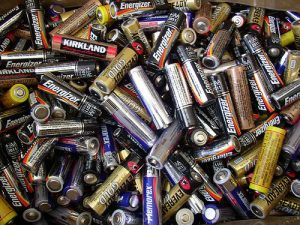Used lithium batteries are dangerous. What to do with them?
 Lithium batteries are found in many everyday devices, from smartphones, laptops and tablets to a TV remote control or electric scooter. And while Europe pays close attention to climate and sustainability issues, the batteries in most modern appliances, which are only growing in demand every year, cannot be easily removed, replaced or repaired. When battery performance slows down, consumers usually give up the device and buy a new one instead of taking care of it and replacing the device’s battery and avoiding electronic waste. Battery failure is one of the most common problems with small consumer electronics. Studies show that 42 percent. smartphones and 27 percent. laptop repair involves specifically replacing batteries. The average battery life of electronic devices is about three years. In addition, there is a significant risk of damage to the device during removal by removing the battery. Thus, a large number of devices are still discarded prematurely due to a non-functioning battery.
Lithium batteries are found in many everyday devices, from smartphones, laptops and tablets to a TV remote control or electric scooter. And while Europe pays close attention to climate and sustainability issues, the batteries in most modern appliances, which are only growing in demand every year, cannot be easily removed, replaced or repaired. When battery performance slows down, consumers usually give up the device and buy a new one instead of taking care of it and replacing the device’s battery and avoiding electronic waste. Battery failure is one of the most common problems with small consumer electronics. Studies show that 42 percent. smartphones and 27 percent. laptop repair involves specifically replacing batteries. The average battery life of electronic devices is about three years. In addition, there is a significant risk of damage to the device during removal by removing the battery. Thus, a large number of devices are still discarded prematurely due to a non-functioning battery.
 One way to reduce battery life is to sell new phones or tablets with easily removable and replaceable batteries. If batteries were easy to remove and replace with new ones, more would be collected for recycling. It is estimated that currently 80 percent. batteries in waste facilities are removed manually and this causes difficulties for recyclers. Not only that, broken batteries become the cause of fire already in the recycling process.
One way to reduce battery life is to sell new phones or tablets with easily removable and replaceable batteries. If batteries were easy to remove and replace with new ones, more would be collected for recycling. It is estimated that currently 80 percent. batteries in waste facilities are removed manually and this causes difficulties for recyclers. Not only that, broken batteries become the cause of fire already in the recycling process.
Electronic devices, such as cell phones, computers, TV remotes, toothbrushes, or electric toys, have built-in batteries and accumulators that contain hazardous materials. Improper disposal of such products and batteries pollutes the environment, conserves natural resources and endangers human health.


